The Yorkville Enquirer reported on April 24, 1895 – “Mr. R.T. Fewell has just returned from several weeks in the business centers of the North and East. He went to raise funds for the cotton factory of which he is to be President. We predict the establishment of this mill at an early date.”
City Directories and History: 1913 – Alex Long Pres & Treas., J.M. Wylie, Sec. and A.J. Quantz, Supt., Ms. Mary M. Lowe, Principal Arcade-Victoria School
The Arcade Cotton Mill, also called Fewell’s Mill, was the fourth textile mill in Rock Hill. It was completed in 1896 and was largely a project of R. T. Fewell, one of
Rock Hill’s leading businessmen and industrialists of the period. The mill was constructed by Capt. A. D. Holler and was a two-story brick structure located on Blackwell Street. The original board of directors included J. M. Cherry, W. J. Rawlinson, T. L. Johnson, W. J. Roddey, T. A. Crawford, and Julius Friedheim. Within a few years, directors from out of town were added, perhaps as a result of outside investments in the business. There were two hundred workers initially, which grew to 300 within a few years. The mill produced poplin and broadcloth. The mill complex
included a mill village of 135 houses. Also part of the complex were three cotton warehouses, built either at the same time as the mill or within a few years. The mill flourished over the years, and by 1907, it was reported that there were 396 residents in the mill village. Houses were located on the following streets: Florence, Sidney, Wright, Morgan, Reynolds, Hagins, and Virginia Circle. The village continued to grow until after World War II, when it had 135 houses. Many of the mill houses remain today, and the community is in a revitalization process. West End Baptist Church was organized in 1908 to serve residents of the Arcade and Victoria Mill Villages.
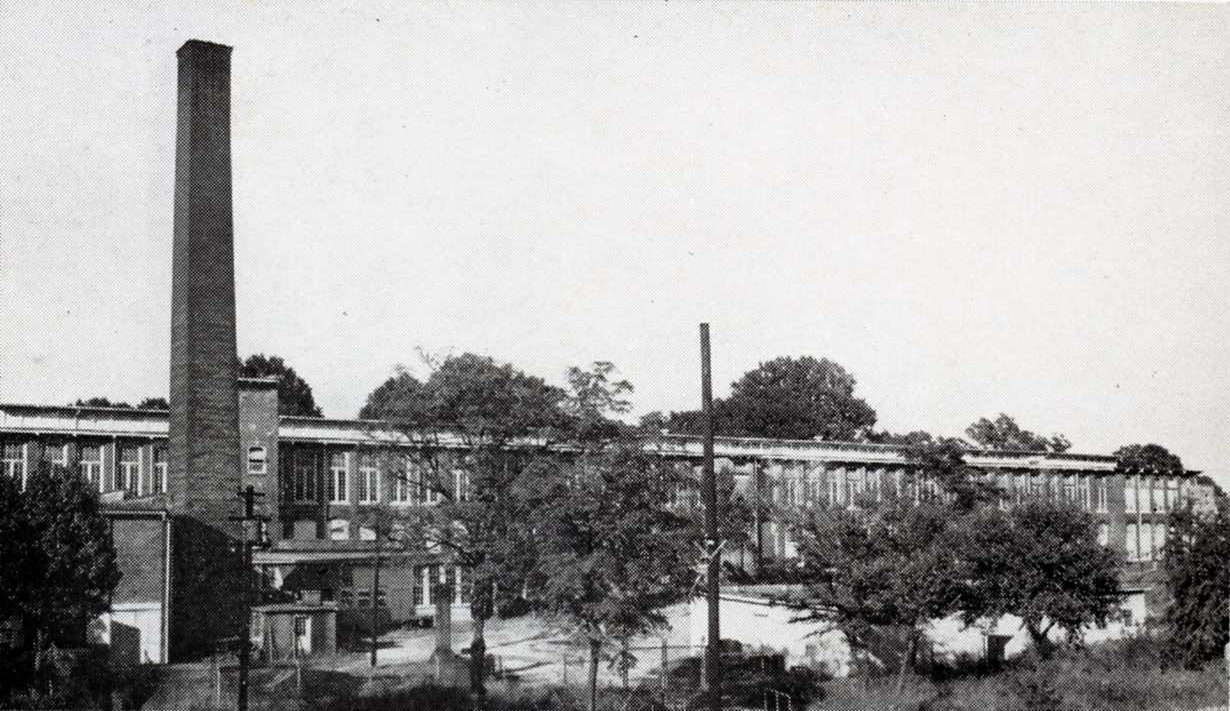
Courtesy of the City Without Cobwebs – Brown, 1953
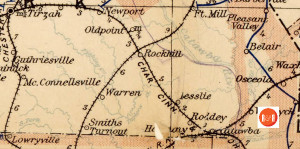
Postal map showing Rock Hill as a transportation hub on two railroads in 1896. Courtesy of the Un. of NC
The Arcade Mill closed in the textile collapse of the late twentieth century. In the late 1990s, the main mill burned, and the City of Rock Hill cleared the site in 2006. Two sections of the cotton warehouse remain, and have been placed in the National Register of Historic Places.
The Herald reported on June 15, 1895 that a meeting of the subscribers in the capital stock of the Arcade Cotton Mills will meet next Thursday to elect a board of directors. A site has been selected, but is not being made public at this time.
The Herald reported on June 22, 1895 – “The officers of the Arcade Mills elected W.L. Roddey as President.”
The Herald reported on July 3, 1895 – that the Arcade Mill will be located on land purchased from V. B. McFadden, about 300 yards west of the old brickyard of A. D. Holler.
The Herald reported on Aug. 7, 1895 – “That ground has been broken for the Arcade Mill. Mr. A.D. Holler will be the building and will use about one million bricks from his yard in Oakland.”
The Herald reported on August 21, 1895 that J. H. Stevens of Chester had a contract for construction for 15 of the three-room houses being built for the Arcade Mill. Mr. Fewell has the contract for the rest of the houses. Also in the same issue, it reported that ground has been broken for the Arcade Mill building. Capt. A. D. Holler will be the contractor, and will supply the one million bricks needed for the building from his brickyard in Oakland.
The Herald reported on September 7, 1895 on the progress of the Arcade Mill construction. The foundation was complete, and work was beginning on the engine and boiler houses.
The Herald reported on Feb. 26, 1896 – “The machinery for the mill is arriving and it should open by April 1st. Mr. R.T. Fewell is Pres., Mr. M. L. Moore, has been named Supt., He is from Concord, N.C. where he ran the Odell Mill and is the brother of W. W. Moore, former Supt. of the Globe Mill.”
The Herald reported on April 25, 1896 – “The D.A. Thompkins Company of Charlotte have about completed wiring the mill for the electric lights.”
The Herald reported on October 23, 1895 that the walls of the Arcade Mill have reached the top of the second story, and 17 cottages are being built.
The Herald reported on Oct. 21, 1896 – “The Arcade Mill made its first shipment of yarn last Friday, which weighted about 65,000 pounds.”
The Herald reported on Nov. 11, 1896 – “Mrs. Jno. R. Allen has let the contract for a six room dwelling in the Allen Grove between V.B. McFadden’s home and the Holler’s brickyard. A. D. Holler is the contractor.”
The Yorkville Enquirer reported on June 23, 1897 – “The stock holders of Arcade Mill met and elected R.T. Fewell Pres and Treasurer and Capt. W.B. Dunlap as Sec. Members of the board are: J.R. London, D. Hutchison, Dr. T.A. Crawford, J.M. Cherry, and W.J. Rawlinson all of Rock Hill and D.A. Tompkins of Charlotte, N.C. and J.E. Reynolds of New York.”
The Herald reported on May 17, 1899 – “the third annual meeting of the stockholders of the Arcade Mill was held. They are operating 350 looms and 6,000 spindles making 39″ gray goods for converters. The Pres. is R.T. Fewell.”
The Herald reported on Feb. 21, 1900 – “The Arcade Cotton Mill is erecting ten additional operative houses each having four rooms.”
The Herald reported on March 14, 1900 – William O. Wright, son of Mr. and Mrs. J.S. Wright, lost the first join of the first finger of his right hand last Tuesday while at work at a wrapping machine at the Arcade Mill, it was so seriously mashed as to require amputation.” (See article on Mr. Wm. O. Wright this page.)
The Rock Hill Journal, June 12, 1901 – “A free kindergarten will open next Monday at the house in which the Arcade – Victoria school has been taught. It will serve ages 4-7.” (The Herald reported on June 5, 1901 – “The RH Free Kindergarten Association has secured Mrs. Hellene Gareissen, who has completed training at Winthrop College. She will teach in a house in the Arcade Mill village which will be accessible to both Arcade and Victoria residences.”)
The Herald reported on Nov. 1, 1901 – “That the Arcade Cotton Mill is successful. It has 314 looms making brown sheeting. The spindle department has 6032 spindles and makes 11,000 yards of cloth daily. The mill employees 200 operatives, and the population of the village is 314. The electric plant furnishes enough power for 400 lights. R.T. Fewell is President and Treasurer, W.H. Dunlap is Sec., G.A. Buchanan is supt., T.S. Bolton is boss weaver, J.B. Broadnax is boss spinner, A.R. Long is boss carder, and J.A. Broadnax is mechanic and engineer.”
The Rock Hill Journal on Nov. 16, 1901 reported – “Management of the Arcade and Manchester Mills are still in doubt if they will purchase power from Catawba Power Co., upon completion of the dam at India Hook.”
The Herald reported on May 10, 1902 – “One year ago, the RH Free Kindergarten Association was organized with a membership of nearly 200. The association, with the assistance of R.T. Fewell, the Pres. of the Arcade Mill, have operated a free Kindergarten for little ones of the Arcade District. They are now raising funds for their support. Prof. H. N. Snyder of Wofford College will deliver a lecture at Friedheim Hall for .25$ admission to raise funds for the Kindergarten.”
The RH Herald reported on March 5, 1902 – “Mr. R.T. Fewell has erected a building near the Arcade Mill whose dimension are 60-75 feet. It is to be a waste mill and part of the machinery has been installed. It will use the waste from the cotton mills to produce felt and commercial bats later it may produce shoe linings and shoe soles. It is the individual property of Mr. Fewell.”
The Herald reported on Nov. 26, 1902 – “A force of fifty hands is at work on enlarging the pond at the Arcade Mill to furnish more water for boilers and humidifiers. The waste mill near the Arcade, built by R.T. Fewell, is a success. It’s present output is used in mattresses. An addition to the waste mill will be built to produce other materials.”
The Rock Hill Record reported on Feb. 26, 1904 – “That the waste mill, property of Mr. R.T. Fewell, in the Arcade Cotton Mill village was destroyed by fire on Wednesday afternoon. The fire was discovered in the picker room. The city fire department helped save nearby building. The loss is $12,000. and there is no insurance. The engine and boiler room of the mill were slightly damaged.”
The RH Record of May 10, 1909 – “Reported a house near the Arcade Mills was practically destroyed. It was occupied by an African American family.”
The McElwee Store ledger of 1915 states that James M. Wylie (Minnie W.), Sec. of Arcade Mills living on Hawthorne near Charlotte Avenue.
Contribution and written by Paul M. Gettys
Sources: The Herald, Lynn Willoughby, The Good Town Does Well, Rock Hill, S. C., 1852-2002, published 2002 by the Rock Hill Sesquicentennial Committee. Douglas Summers Brown, The City Without Cobwebs, A History of Rock Hill, South Carolina, Columbia: University of South Carolina Press, 1953.
The Herald reported on Sept. 3, 1914 – “That the teachers for the Arcade – Victoria School were, Mary Love and Lillian Caveny and the enrollment was 84 students.”
The Rock Hill Herald on Jan. 17, 1916 reported – “The School Board meet and the enrollment at the Arcade – Victoria School is 110, the Night School – 71, and the Kindergarten 67”. On Feb. 25 the Herald also reported – “The AV Night School is under the supervision of the city school system and has been in operation for two years. The teachers are Ms. Abby Bryan, Ms. Mary Hickson, Ms. Ima London and Ms. Alice Humphries.” *** Note that the RH PO Ledger of 1914 shows that Mrs. Hickson was residing at #359 Arcade. Was she the mother of the teacher, Ms. Mary Hickson?
The Herald reported on Nov. 10, 1906 – “That fourteen Belgium immigrants landed at Charleston on the steamer Wittkind and they are to be employed at the Arcade Mill.”
Bob Baker shared on Facebook – 5/28/14, “I grew up at the Arcade community, and went to school at Arcade-Victoria for grades 1-6. I remember all my teachers, Miss Hutchinson (1st), Miss Biggers (2nd), Miss Wendell (3rd), Miss Bryant (4th), Miss Thompson (5th), and Miss Salters (6th)–the Principal. I was wondering, Does anyone remember Miss Trumble–she used to come once a week and teach Bible. She called us her “little chickies”. She left a lasting impression on me and a lifetime of good memories.”
The McElwee Store ledger of 1915-16 stated that A. Harris Drury and wife Dovie, (Arcade Mill employee), held an account at the store.
The McElwee Store ledger of 1915-16 also stated that James T. Hancock and wife Martha (Arcade Mill employee). held an account at the store. They lived at #60 Arcade Mills.
The Herald reported on June 18, 1925 – “Within recent weeks, practically all the cotton mills in Rock Hill has suspended or reduced work, but the mill workers are optimistic on the outlook. Aragon and Arcade are both shirting manufacturers and are on full schedules. Wymojo Mill is on a three day a week schedule. Industrial Mill is on a four day week schedule, Carhartt on a three day schedule after suspending operations. The gingham manufacturing is running full-time this week but the schedule is indefinite. Harris Mill (Vicotoris #2) runs with Victoria’s schedule and Helen Mill runs with Wymojo.”
James M. Winchester reported on Facebook, July 28, 2016 – “Born on Hagin in a “shotgun house” moved around the corner to Gettys, where grandparents and cousins lived. We all went to Arcade Victoria school. Neighbors worked at the Arcade, Victoria or the Bleachery.”
Ted Richardson reported on Facebook, July 28, 2016 – “As a teenager I cleaned up the weave room on Saturday mornings. I also worked some on Friday nights as a “spare hand”. This experience had a lot to do with my going to college and getting a BS and MBA. Some fine people worked at the Arcade. My grandfather and grandmother lived on Wright Street in the mill village.”
In September, 2001, I (Bob Baker) helped organize an Arcade-Victoria “Reunion”. This was only days after 9-11, and it was something so many of us desperately needed–to be with old friends and feel the warmth of friendship that had never faded. Even though it had been many, many years since we had last seen each other, the close bond we all felt toward each other was overwhelming. It was held at the West End Baptist Church, a “staple” in our Arcade community that was located on Hagins Street. We had a crowd of over 150 people. It was a very special time. – Facebook July 29, 2016
Stay Connected
Explore history, houses, and stories across S.C. Your membership provides you with updates on regional topics, information on historic research, preservation, and monthly feature articles. But remember R&R wants to hear from you and assist in preserving your own family genealogy and memorabilia.
Visit the Southern Queries – Forum to receive assistance in answering questions, discuss genealogy, and enjoy exploring preservation topics with other members. Also listed are several history and genealogical researchers for hire.
User comments welcome — post at the bottom of this page.
Please enjoy this structure and all those listed in Roots and Recall. But remember each is private property. So view them from a distance or from a public area such as the sidewalk or public road.
Do you have information to share and preserve? Family, school, church, or other older photos and stories are welcome. Send them digitally through the “Share Your Story” link, so they too might be posted on Roots and Recall.
Thanks!
User comments always welcome - please post at the bottom of this page.
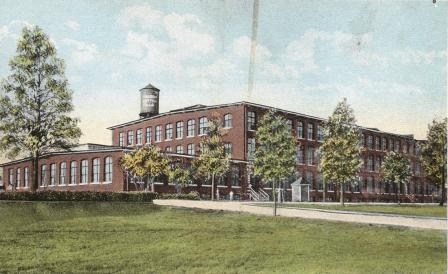
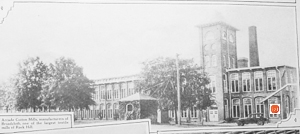
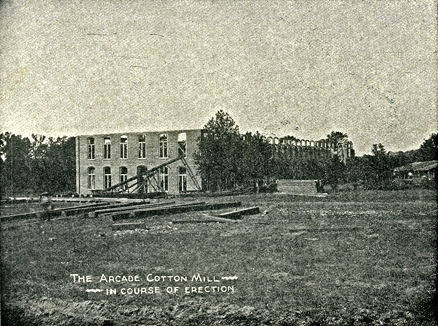
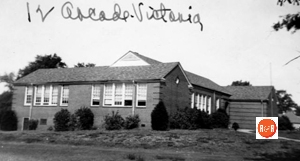
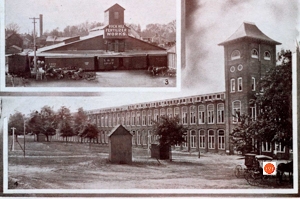
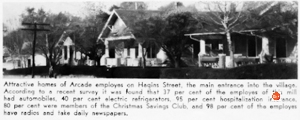
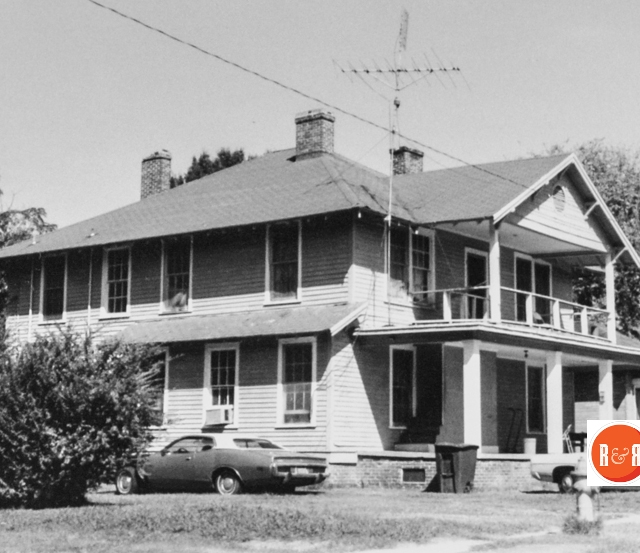
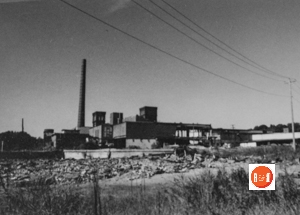
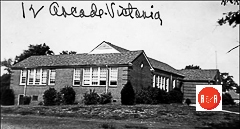
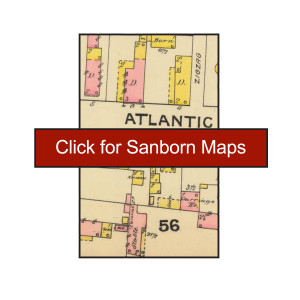
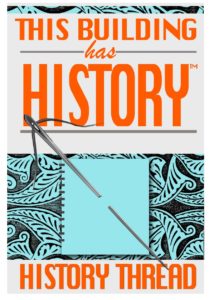
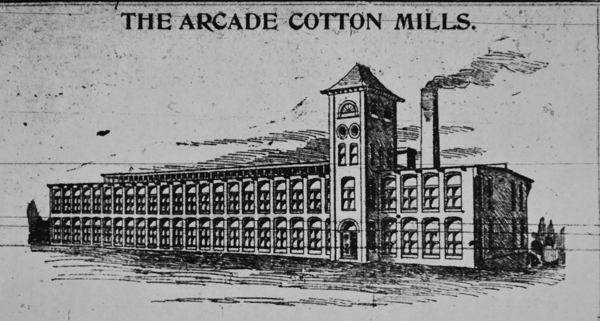
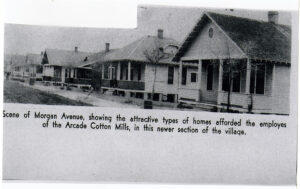


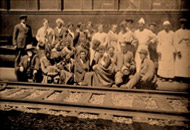
My grandparents lived on Sydney street. I was 7-9 and went to the school, Est End Baptist church, where my grandfather, Aaron Holland, was the minister. He decided to change careers and opened a barbershop and sandwich grill… Holland’s Barbecue and grill. I recall the mills calling in their lunch orders, which were huge. Old memories!
We are organizing an Arcade Reunion, Myself (Bob Baker), Christine Conner Byers, Diane Collins, Diane Jennings, Von Earle. Please email me (bobbaker_9397@hotmail.com), if you are interested in attending. We will set the date/location after our first meeting next week.